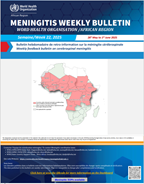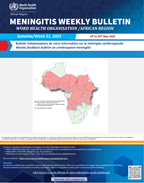Ensuring effective meningitis surveillance
Surveillance, from case detection to investigation and laboratory confirmation, is essential for the control of meningitis in order to: detect and confirm outbreaks; monitor trends; estimate disease burden; monitor the emergence of epidemic strains as well as their antibiotic resistance profile; and estimate the impact of meningitis control strategies, particularly preventive vaccination programmes.
WHO and partners work together to provide the latest guidance and technical support to countries to strengthen their surveillance systems and laboratory confirmation capacity.
Latest surveillance guidance:
- Surveillance standards for vaccine-preventable diseases (see chapters 5, 12 and 17)
- Standard operating procedures for surveillance of meningitis preparedness and response to epidemics in Africa
In the African meningitis belt where prompt outbreak detection and confirmation remains a major surveillance objective, WHO works with Member States to collect, analyze and disseminate the latest information on the meningitis situation, in the Weekly meningitis bulletins (see below).
Through the development and provision of up-to date methods and tools, WHO, together with its Collaborating Centers for meningitis support countries to strengthen case detection and laboratory confirmation, as well as to monitor the circulation and
emergence of epidemic strains.
WHO Collaborating Centers for meningitis
WHO works together with partners through networks, such as the MenAfrinet regional surveillance Network for the African meningitis Belt, to support Member States to collect and analyze high quality meningitis surveillance data. This enables monitoring the impact of meningitis control strategies, such as the introduction of the Meningitis A conjugate vaccine.
The MenAfrinet regional surveillance network


/epidemic-and-pandemic-preparedness-and-prevention-(epp)/emerging-diseases-and-zoonoses-(ezd)/s24.tmb-144v.png?sfvrsn=db2c74d5_1)
/epidemic-and-pandemic-preparedness-and-prevention-(epp)/emerging-diseases-and-zoonoses-(ezd)/meningitis_bulletin_2025_week_23_thumbnail.tmb-144v.png?sfvrsn=ee843ba4_1)

